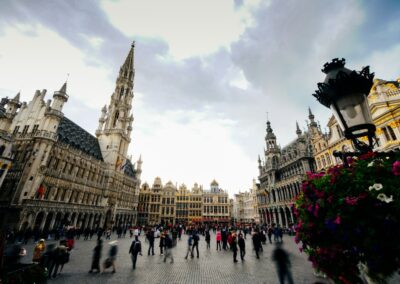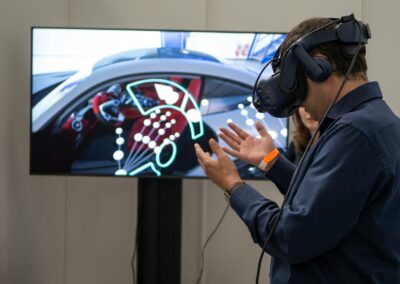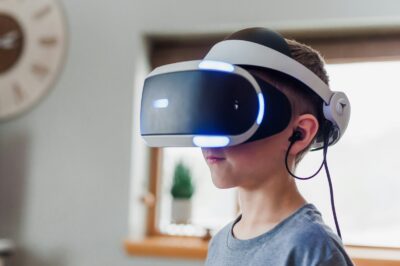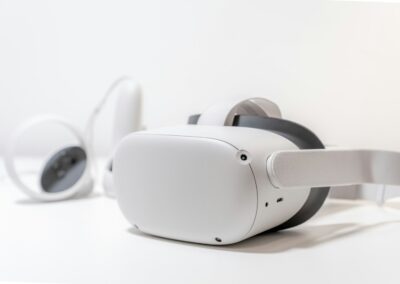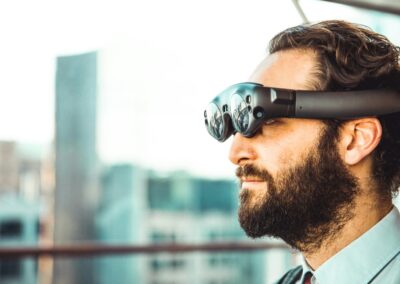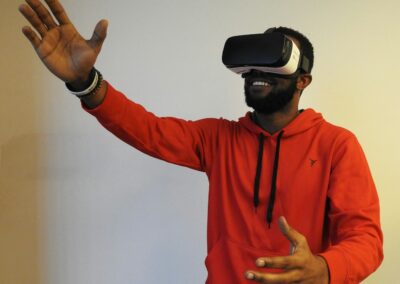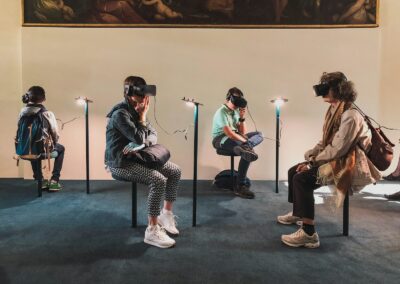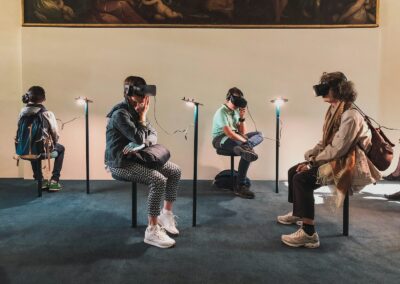Revolutionizing Tourism with Cutting-Edge AR Applications
Transforming Tourism with Augmented Reality
The rise of innovative AR tourist experiences is reshaping the landscape of global tourism, offering travelers immersive and interactive ways to explore destinations. One prominent example is the AR experience provided by the Louvre Abu Dhabi. Utilizing AR applications, visitors can engage with the museum’s exhibits in new dimensions, viewing detailed information and virtual reconstructions of historical artifacts through their smartphones or AR glasses. This technological enhancement not only enriches the visitor experience but also offers a deeper understanding of cultural heritage.
In Riyadh, the Al-Masmak Fort has integrated AR into its visitor experience, allowing tourists to witness historical events through virtual reenactments. By overlaying digital animations on the real-world surroundings, the AR application brings history to life, providing an engaging educational experience. This innovative approach transforms a traditional tour into an interactive journey through time, significantly enhancing the overall visitor satisfaction and engagement.
Dubai has also embraced AR technology to enhance its tourism sector. The Dubai Frame, an iconic architectural landmark, offers an AR application that allows visitors to see the city’s transformation over the decades. By pointing their devices at specific points within the Frame, users can visualize Dubai’s skyline changes and urban development, creating a dynamic and educational experience. These applications exemplify how AR can provide unique insights and perspectives, making tourist attractions more compelling and informative.
Key Features of Effective AR Tourist Applications
The effectiveness of innovative AR tourist experiences hinges on several key features. Firstly, the integration of real-time data and interactive content is crucial. Applications that provide up-to-date information and interactive elements such as quizzes, games, or virtual guides significantly enhance user engagement. For instance, the Louvre Abu Dhabi’s AR app offers real-time updates about ongoing exhibitions and interactive challenges that encourage visitors to explore different sections of the museum.
Another critical feature is the user-friendly interface and intuitive design. AR tourist applications must be easy to navigate, with clear instructions and seamless interactions to ensure a positive user experience. The Al-Masmak Fort AR app, for example, employs a straightforward interface that guides users through the historical reenactments, making it accessible to visitors of all ages and technological proficiency levels. In tech-savvy cities like Riyadh and Dubai, delivering a smooth and intuitive user experience is essential for widespread adoption.
Personalization and localization also play significant roles in the success of AR tourist applications. Apps that offer personalized content based on user preferences and localized information tailored to specific tourist sites create a more engaging and relevant experience. The Dubai Frame AR app, for instance, adjusts its content to provide historical insights specific to the visitor’s location within the Frame, making the experience highly personalized and contextually relevant. This approach not only enhances user satisfaction but also fosters a deeper connection with the destination.
Challenges and Solutions in Developing AR Tourist Experiences
Developing effective innovative AR tourist experiences comes with its set of challenges. One significant challenge is ensuring the accuracy and reliability of AR content. AR applications rely on precise data and seamless integration with real-world environments to function effectively. Inconsistent or inaccurate data can disrupt the user experience and diminish the application’s credibility. Developers must employ robust data management and validation techniques to maintain high accuracy levels, ensuring a reliable and enjoyable user experience.
Another challenge is addressing the hardware limitations of users’ devices. AR applications require significant processing power and battery life, which can be a limitation for older or less advanced smartphones. To overcome this, developers need to optimize their applications to run efficiently across a wide range of devices. Ensuring compatibility and performance on various platforms is crucial for reaching a broad audience and providing a consistent user experience. In regions like Saudi Arabia and the UAE, where a diverse range of devices is used, this optimization is particularly important.
Privacy and data security are also critical considerations in the development of AR tourist applications. These apps often collect and process large amounts of user data, including location information and personal preferences. Ensuring robust security measures to protect user data is essential to maintain trust and compliance with data protection regulations. Developers must implement strong encryption and data protection protocols to safeguard user information, fostering confidence and security among users. Adhering to these standards is crucial for the successful deployment of AR tourist experiences in regions with stringent data protection regulations like the UAE.
Conclusion: The Future of AR in Enhancing Tourist Experiences
In conclusion, the development of innovative AR tourist experiences offers immense opportunities to revolutionize the tourism industry. By addressing challenges related to data accuracy, hardware compatibility, and data security through advanced technologies and thoughtful design, AR applications can provide immersive, engaging, and personalized experiences for tourists. In tech-forward regions like Saudi Arabia and the UAE, where user expectations are high, continuously innovating and optimizing these applications will be key to achieving success and meeting the diverse needs of travelers.
—
#InnovativeARTouristExperiences #AugmentedRealityTourism #ARInTourism #TouristExperience #ARTravel #SaudiArabia #UAE #Riyadh #Dubai #ModernTourism #BusinessSuccess #Leadership #ProjectManagement








